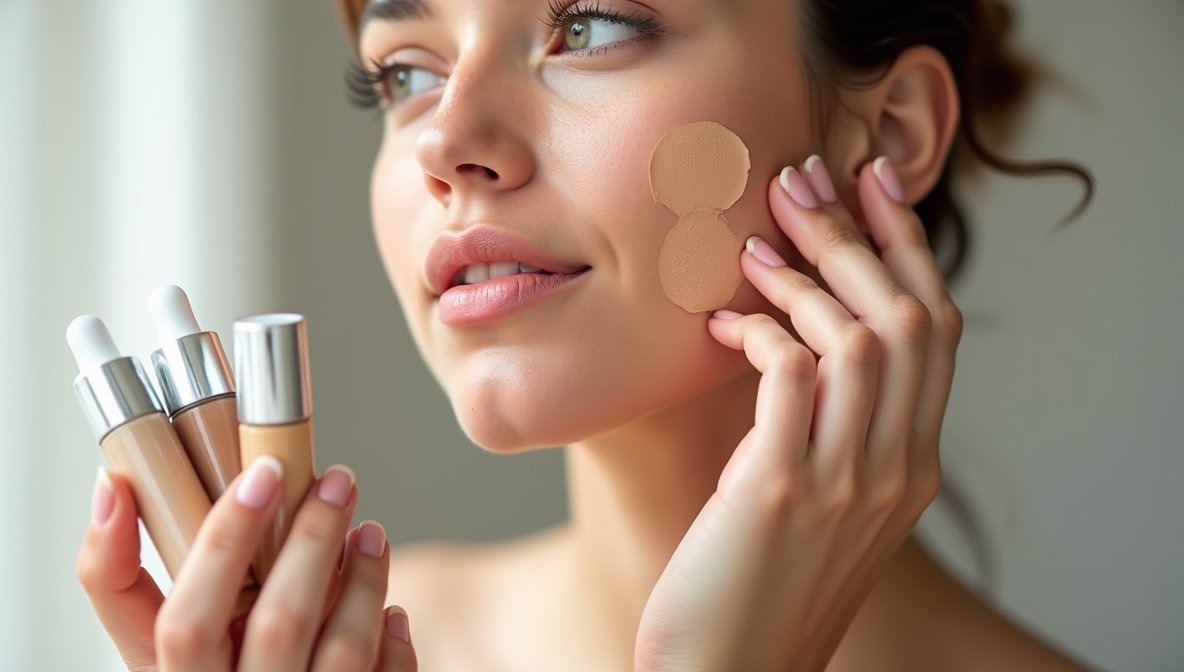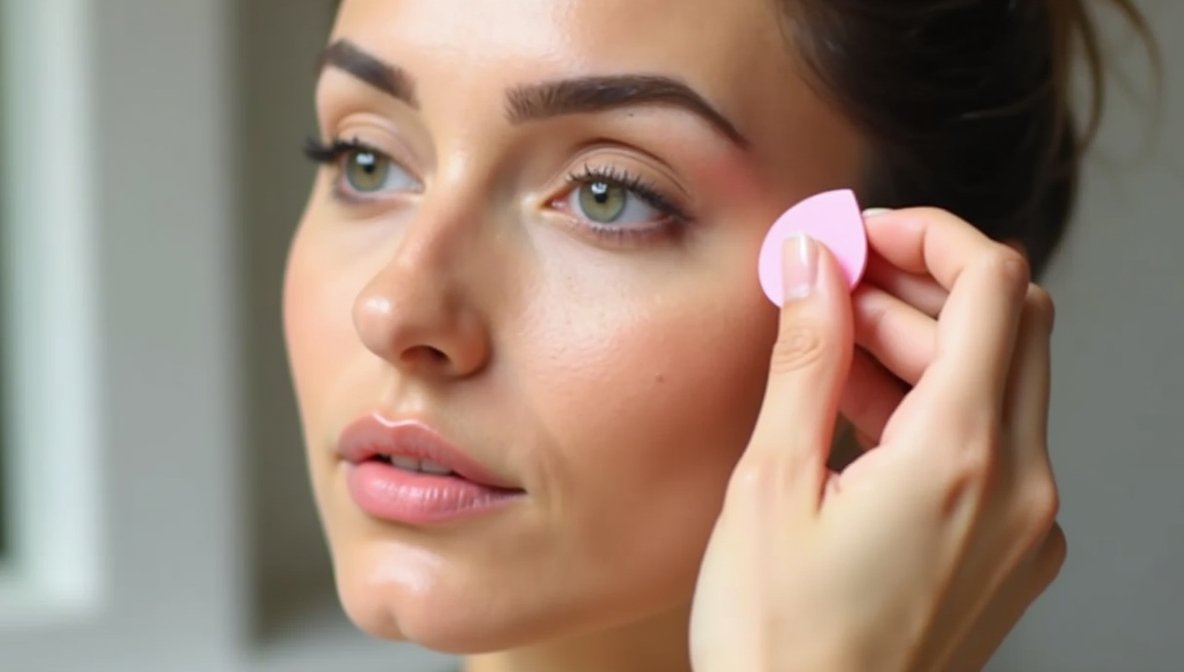How to Choose the Right Foundation Shade for Your Skin Tone
Finding the perfect foundation shade can feel overwhelming, especially for beginners. With so many undertones, textures, and finishes available, it’s easy to get lost. But don’t worry—choosing your ideal foundation doesn’t have to be complicated. By understanding your skin tone, undertone, and using a few simple testing tricks, you’ll be able to pick a shade that blends seamlessly with your skin and enhances your natural beauty.
In this guide, we’ll walk through practical steps to identify your undertone, test shades correctly, and avoid common mistakes. Plus, we’ll share some beginner-friendly foundation recommendations to help you shop with confidence.
Understanding Foundation Basics
Foundation is the base of every makeup look. Its primary purpose is to even out your skin tone, cover imperfections, and create a smooth canvas for the rest of your makeup. A good foundation doesn’t have to look heavy—it should blend seamlessly with your natural skin, enhancing your features rather than masking them.
There are several common types of foundation, each with its own texture and best-use scenario:
-
Liquid Foundation – The most popular type, easy to blend and available in a wide range of finishes (matte, dewy, satin). Suitable for everyday use and versatile for different skin types.
-
Cream Foundation (Stick or Pot) – Offers fuller coverage with a slightly thicker texture. Great for dry or combination skin and for occasions where you want a flawless, long-lasting finish.
-
Cushion Foundation – Comes in a compact with a sponge soaked in liquid foundation. Known for being travel-friendly and quick to apply, ideal for touch-ups throughout the day.
-
Powder Foundation – Lightweight and mattifying, perfect for oily skin or for people who prefer a more natural, no-makeup look. Often used in summer or humid climates to reduce shine.
By understanding these different types of foundation, beginners can choose the formula that best suits their skin type, lifestyle, and desired finish.
💡 Beginner’s Tip:
When choosing your foundation, always consider your skin type first.
-
If you have oily skin, go for oil-free or matte formulas to control shine.
-
For dry skin, hydrating or dewy foundations work best to add glow and prevent flakiness.
-
If you have sensitive skin, look for fragrance-free and dermatologist-tested products to avoid irritation.
Testing foundation on your jawline (instead of your wrist) is the best way to ensure the shade matches both your face and neck for a natural look.
Identifying Your Skin Tone

Before selecting a foundation, it’s important to understand your skin tone—the natural color of your complexion. Knowing your skin tone helps narrow down shade options and prevents mismatched makeup looks. Skin tones are generally divided into four main categories:
-
Fair – Very light skin that often burns easily under the sun. People with fair skin usually have pink or porcelain undertones.
-
Medium – A balanced skin tone with a warm or neutral base. This category covers a wide range of shades and is the most common globally.
-
Tan – A sun-kissed, golden tone that leans toward warmth. Tan skin often looks best with yellow or golden undertones.
-
Deep – Rich, dark complexions with cool, warm, or neutral undertones. This tone requires foundations with higher pigment levels to match accurately.
💡 How to Quickly Determine Your Skin Tone:
-
Natural Light Test: Look at your bare skin in natural daylight. If your skin burns easily, you’re likely fair; if you tan quickly, you’re probably medium to tan; if your skin rarely burns, you might be deep.
-
Vein Test: Check the veins on your wrist. If they appear blue or purple, you may lean cool. If they look green, you likely have warm undertones. If you can’t clearly tell, you’re probably neutral.
-
Jewelry Test: Notice whether silver or gold jewelry flatters you more. Silver tends to suit cool tones, while gold looks better on warm tones. Neutral tones can usually wear both.
By combining these simple methods, you can quickly identify your skin tone and move on to finding the right foundation shade.
Testing Foundation Shades the Right Way

Finding the perfect foundation shade isn’t just about picking what looks good in the bottle—it’s about testing it the right way to see how it blends with your natural skin tone. Here are three key steps:
-
The Jawline Test
Always swatch foundation along your jawline and neck, not on your hand or wrist. The skin on your hands is often lighter or darker than your face, which can lead to choosing the wrong shade. Testing at the jawline ensures the color blends seamlessly between your face and neck, avoiding any harsh contrast. -
Check in Natural Light
Lighting can dramatically change how a foundation looks. Artificial lighting in stores often makes shades appear warmer or more flattering than they really are. Step outside or near a window and check your swatch in natural daylight for the most accurate result. -
Compare 2–3 Shades
Instead of testing just one, swatch two to three shades that are close to your skin tone side by side. The one that seems to disappear into your skin the most naturally is usually your best match. Sometimes, mixing two shades may also give you the most realistic finish.
💡 Pro Tip: Wear the foundation for at least 15–20 minutes before deciding. Some formulas oxidize (become darker) as they sit on the skin, so giving it time helps you avoid surprises.
Common Mistakes to Avoid
-
Choosing a Shade That’s Too Light
Many beginners pick a foundation that is one or two shades lighter, thinking it will brighten their face. In reality, this can make the skin look unnatural and create a stark contrast with the neck. A foundation should match your skin tone, not change it. -
Testing Only on the Wrist or Hand
The skin on your hand or wrist often doesn’t match your facial skin tone. This can lead to choosing the wrong color that looks fine on your hand but odd on your face. -
Ignoring Oxidation
Some foundations darken after a few minutes of wear due to oxidation. If you don’t wait and check, you might end up with a shade that looks perfect at first but too dark later. -
Skipping Blending Check
Even if the color looks right, always blend it out slightly to see if it disappears seamlessly into your skin. A visible line means it’s not the right match.
By avoiding these mistakes, beginners can save time, money, and frustration—finding a foundation that enhances rather than masks their natural beauty.
Best Foundation Options for Different Skin Types
Choosing the right foundation isn’t only about shade—it’s also about selecting a formula that works well with your skin type. Using a foundation that suits your skin can improve comfort, longevity, and the overall look of your makeup.
-
For Dry Skin → Hydrating Foundation
Dry skin often looks flaky or dull if paired with a matte formula. Instead, choose a hydrating foundation that delivers moisture and adds a natural glow.
Popular Options:-
NARS Sheer Glow Foundation – Lightweight with a luminous finish, perfect for adding radiance.
-
Maybelline Fit Me Dewy + Smooth – A budget-friendly drugstore option that hydrates and smooths.
-
-
For Oily Skin → Matte Foundation
Oily skin tends to produce excess shine, especially on the T-zone. A matte foundation helps control oil and keeps your base looking fresh for longer.
Popular Options:-
Estée Lauder Double Wear Stay-in-Place – Full coverage, long-lasting, and shine-resistant.
-
L’Oréal Infallible Pro-Matte – Affordable, easy to apply, and great for everyday wear.
-
-
For Combination Skin → Balancing Foundation
Combination skin requires a formula that can hydrate dry areas while controlling shine in oily zones. Look for semi-matte or satin finishes.
Popular Options:-
Fenty Beauty Pro Filt’r Soft Matte Longwear – Lightweight but buildable, with a soft matte finish that works across skin types.
-
Clinique Even Better Makeup – Offers balanced coverage with skincare benefits.
-
-
For Sensitive Skin → Gentle, Fragrance-Free Foundation
Sensitive skin needs extra care. Choose formulas that are dermatologist-tested, hypoallergenic, and free from fragrances or harsh chemicals.
Popular Options:-
BareMinerals Original Loose Powder Foundation – A clean, mineral-based foundation suitable for sensitive skin.
-
Tarte Amazonian Clay Foundation – Gentle, natural ingredients with long-lasting wear.
-
💡 Tip: No matter your skin type, always prep your skin properly with moisturizer and primer—this helps the foundation blend more evenly and last longer.
Application Tips for a Flawless Finish

Even the best foundation can look uneven if it’s not applied correctly. Here are some beginner-friendly tips to achieve a smooth, natural base:
-
Use a Beauty Blender or Makeup Sponge
Dampen the sponge slightly and bounce it over your skin to blend foundation seamlessly. This method helps avoid streaks and ensures the product melts into your skin for a more natural, skin-like finish. -
Apply in Thin Layers
Instead of applying a thick layer all at once, start with a light amount and build coverage gradually. Layering prevents a cakey look and allows you to control how much coverage you want. -
Set with Powder or Setting Spray
To make your foundation last longer, especially in humid or oily conditions, lightly dust setting powder over your T-zone or areas prone to shine. For an even more natural look and longer wear, finish with a setting spray to lock everything in place.
💡 Pro Tip: Always start from the center of your face (cheeks, forehead, nose) and blend outward. This technique helps foundation spread evenly while avoiding heavy buildup around the edges.
Conclusion
Choosing the right foundation shade is both a science and an art. By understanding your skin tone, identifying your undertone, and testing shades the right way, you can find a foundation that blends seamlessly and enhances your natural beauty.
Remember, there’s no one-size-fits-all answer. Don’t be afraid to try different brands, finishes, and formulas until you discover what works best for you. The more you experiment, the better you’ll understand your own skin—and the closer you’ll get to your perfect match.
💡 Final Note: Makeup should feel empowering, not intimidating. With the right foundation, you’re already halfway to a flawless look.
FAQ – Foundation Shade Guide
Q1: What’s the difference between skin tone and undertone?
A: Your skin tone is the visible color of your skin—fair, medium, tan, or deep. Undertone is the subtle hue beneath your skin’s surface: cool (pink/blue), warm (yellow/golden), or neutral (a mix of both). Knowing both helps you pick a foundation that blends seamlessly and looks natural.
Q2: How do I test foundation correctly in stores?
A: Always test on your jawline and neck, not the back of your hand. Check in natural daylight if possible, and compare 2–3 shades side by side. Blend them slightly to see which matches your skin tone and undertone best.
Q3: Should I change foundation shades by season?
A: Yes! Your skin can be slightly lighter in winter and darker in summer due to sun exposure. Having one shade for your base year-round and a slightly darker or lighter shade for seasonal adjustments can help maintain a natural look.
Q4: Can I mix two foundation shades to get my perfect match?
A: Absolutely! Mixing two shades is a common technique to match unique skin tones or seasonal changes. Start with equal parts and adjust gradually until it matches your skin perfectly.
Q5: What’s the best foundation type for oily/dry/combination skin?
A:
-
Dry Skin: Hydrating or dewy foundations to prevent flakiness.
-
Oily Skin: Matte or oil-control foundations to reduce shine.
-
Combination Skin: Balancing foundations that control oil in the T-zone but hydrate dry areas.
-
Sensitive Skin: Fragrance-free, gentle formulas that minimize irritation.






















